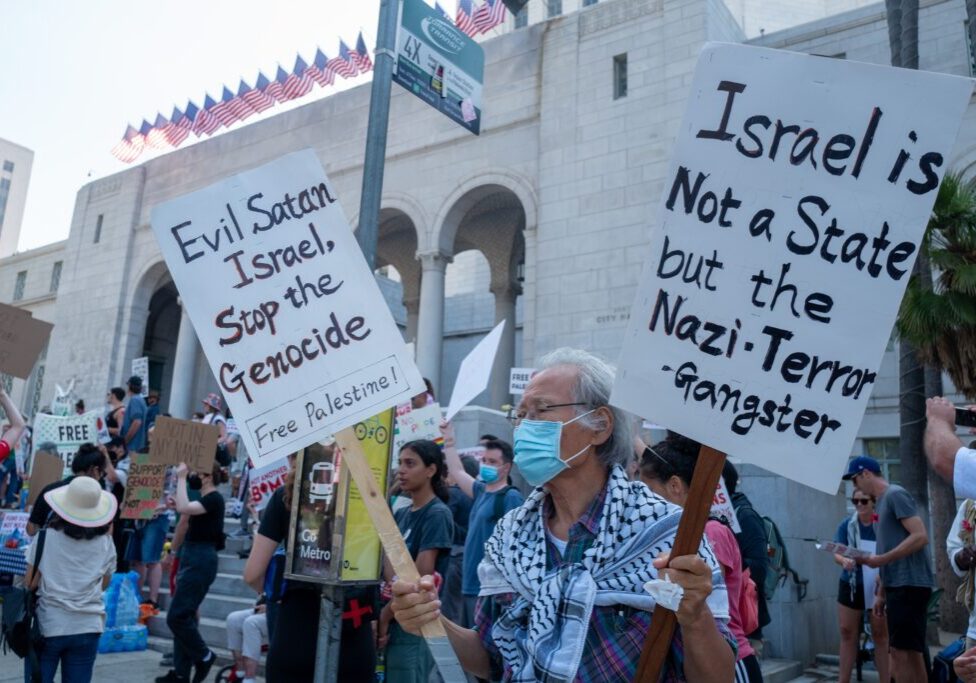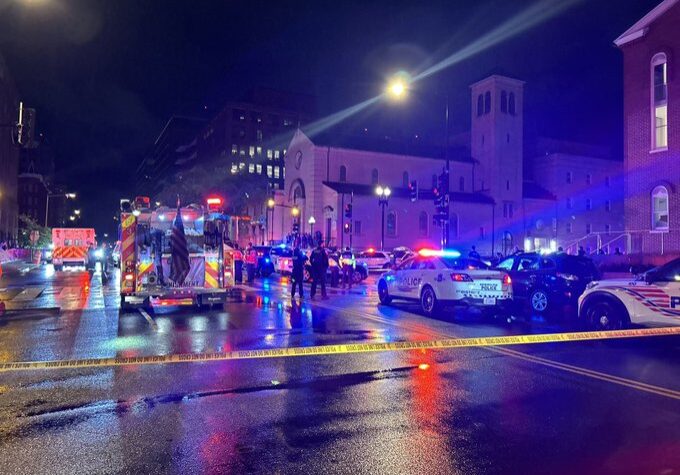Australia/Israel Review
Europa Europa: Writing on the Walls
Oct 31, 2014 | Douglas Davis
Douglas Davis
On a sublime autumn afternoon my bus rumbles towards the Rue des Rosiers. It is the heart of Paris, the heart of the Marais quarter, and also the heart of the Jewish community. Or it was.
As the bus passes the Louvre, a bleak plaster wall is covered with a huge piece of graffiti. It is the detritus of riots a few weeks earlier, ostensibly aimed at supporting Gaza but also trashing synagogues and Jewish shops. The graffiti contains a simple message: “Paris Loves Gaza”.
A few minutes later I am ensconced in one of the diminishing number of Jewish restaurants on Rue des Rosiers, which is being transformed from chaotic, high-density Jewish life into a très-chic pedestrian mall. Then I become aware of a commotion in the street outside. Shrill voices grow increasingly intense. There is a hint of violence. I go outside to see what is happening, but by the time I emerge police have moved in to separate the protagonists and I am just in time to see the offender, flanked by two tough flics, being frog-marched up the road.
There is a surprise: the source of this antisemitic hysteria – for that is now clearly what it is about – is not some deprived, socially-excluded Muslim youth from the banlieue; rather, it is a middle-aged, middle-class French woman, handsome and well-groomed. Two policemen grip her upper arms, but she manages, still screaming imprecations, to clutch a smart-brand shopping bag in one hand and a dog leash in the other, at the end of which bounces a twitchy Pekinese.
Almost immediately, an elderly man, perhaps in his eighties, stops abruptly and turns to face me: “Vive Barbie!” I am drenched in his hate. Before I have time to respond, he shuffles off. Of course, he is referring to Klaus Barbie, the notorious Gestapo officer – the “Butcher of Lyons” – who was responsible for more than 14,000 deaths.
After lunch, I plunge into the Rue des Rosiers to try to understand what is fuelling the madness. Twenty metres from the restaurant I stop to admire a neat, well-maintained building with the words “Ecole des Travail” carved above its entrance. Then I notice a plaque set in the wall: “In memory of the principal and pupils of this school who were arrested by the Vichy police and the Gestapo in 1943 and 1944 and who were deported and exterminated in Auschwitz because they were born Jewish.”
The sadness is unbearable. I look around for an escape and turn off into the charming Rue des Hospitalières-Saint-Gervais. Almost immediately, I find myself outside the Ecole Primaire Commune des Garçons Israelites. Here, again, a small plaque mounted on a wall besides the entrance tells its story: “260 Jewish children from this school were deported to Germany during the Second World War and were exterminated in the Nazi camps. Never forget.”
How can anyone forget? The two people I encountered on the Rue des Rosiers have not forgotten. Surely they, too, have seen the inscriptions on the walls. So what are they remembering? More pertinently, what are they regretting?
As I read at the plaques on the school walls I am also thinking about the graffiti on the wall near the Louvre. They are separated by decades, but they seem to me to be of a piece. How does love of Gaza metastasise into solidarity with a long-dead Nazi psychopath? Would thousands of French men and women have rampaged through Paris in support of Gaza if Hamas had been at war with, say, Egypt, or Yemen, or Vanuatu? The great good fortune of the Palestinians is that their enemies are Jews.
What is it about France and the Jews? What is it that compels the French, custodians of the world’s greatest treasures, makers of the world’s finest wines, inventors of joie de vivre, to continue to foster such fantastical levels of hatred?
It grieves me that my beloved France is the seed-bed of antisemitism. Certainly, France has a long and intimate engagement with Jew hatred. It is, after all, the home of the Dreyfus Affair, which gave birth not only to modern mass antisemitism in the late 19th century, but also to modern Zionism.
During two tragic years of World War II, 76,000 French Jews were deported to Auschwitz. Now the Jews of France have somewhere to go. And thousands are exercising that option. According to Israeli officials, immigration from France to Israel jumped by 64% between 2012 and 2013, when the number of French émigrés for the year stood at 3,200 people. This year, they are predicting that more than 5,000 will leave for Israel. French officials in Jerusalem say that 150,000 French nationals have already made their homes in Israel.
Standing on a crowded bus as I return home from Rue des Rosiers, the images of the day – the questions they raise and the disturbing answers they suggest – are swirling about my head. I am suffused with sadness and am suffering from emotional overload. Then I realise that my wallet has gone. A pickpocket on the bus has struck it lucky. Once I would have been angry and desolate. Now I do not care.
Tags: Antisemitism






